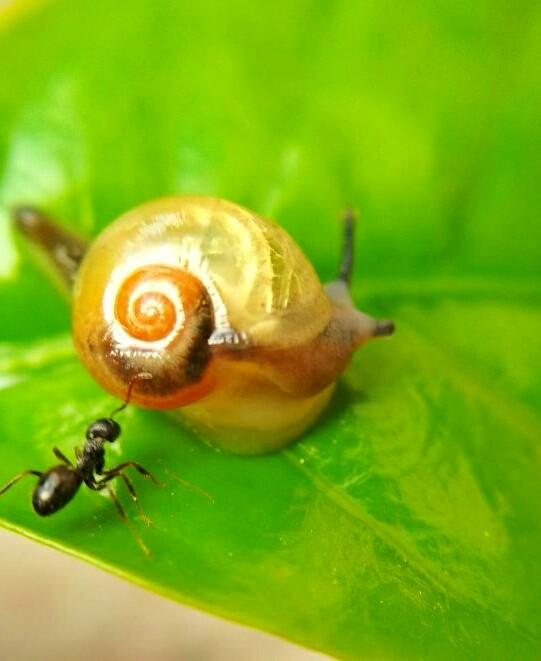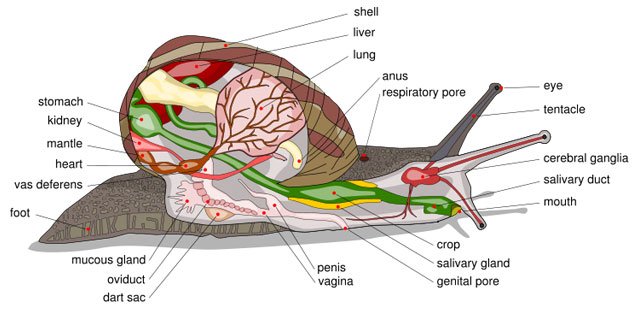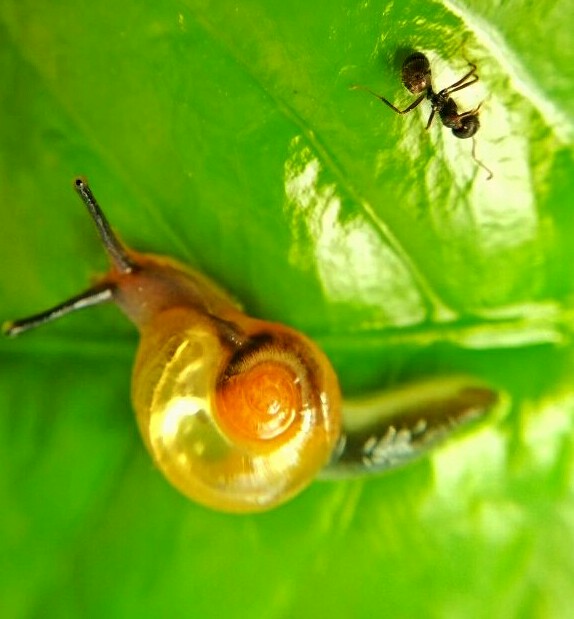
Education covers all aspect of knowledge, one of the aspect is teaching them about living thing object that is regarded as science. Most of science teaching is something that relates to biological research in order to deeply understand about how a living thing associates with nature. Having a common research object will make student easy to understand about the object that is being taught. Well! The object that I am going talk is snail, a soft skin animal that is easy to be found.
There are many types of snails we can find but most of them have their own distinction which are devided into two class of habitat aquatic or terrestrial. They adapt to live in the sea or bodies of fresh water, but they spend most of time on land, commonly in humid areas.
Its scientific name is Lymnaeidae as a common name for the pond snails, is a taxonomic family of small to large air-breathing freshwater snails, aquatic pulmonate gastropod mollusks, that belong to the clade Hygrophila.
This family exhibits a great diversity in shell morphology but extremely homogeneous anatomical traits. Diversity of shell morphology is linked to substantial eco-phenotypic. Hubendick (1951)illustrated this point by compiling up to 1143 species names, a large number of which he synonymized. In contrast, the anatomy of their reproductive tracts (including prostate, penis and preputium) is extremely homogeneous. Immunological, cytogenetical, enzyme electrophoresis studies, and DNA-based approaches have demonstrated extensive homoplasy in anatomical characters.

The Anatomy of Snail is chatagorized in any kind of marphology in each class and sub class, but they are also devided into the primary characteristic, muscle, vicerial mass that has internal organ, and it can not be possibly released the calcium carbonate shell. The anatomy of a land snail is very different from most animals. Most of us recognize snails by their spiral shell, but this is not the only interesting thing about them. His body is a cluster of peculiarities and surprising data, not found in other animals. Some people find them fascinating while others think they are pretty ugly. When you start to analyze all of the parts of their body, though, they have a unique anatomy and physiology.The shell of a land snail can be very different in size and shape depending on the species. Some of them are cone-shaped while others are round. However, all of them have a spiral design, caused by the way land snails produce and growth their shells. This structure protects the snail from the environment and even from predators. It is made up of calcium carbonate which makes it strong and remains that way as long as the snail consumes food with calcium.
Its surface can show different colors with fringe designs, but they usually are brown or yellow. The shell protects the body and internal organs of the animal and has an opening to one side, usually the right.

We probably do not notice how this mollusk see, that make this kind of snail is unique as [among gastropods terrestrial pulmonate snails, such as the Roman snail, are among the most highly developed groups. This might best be explained by those snail groups having had to undergo most evolutionary changes to adapt to life on dry land. Comparing the eyes of all gastropods, all possible evolutionary stages can be seen. Like among all molluscs, in snails as well the development of the sense of sight is closely connected with their way of life. But, contrary for example to bivalves - mussels and clams - snails always have a head, even if they live in an almost immobile fashion.
For their needs, therefore, a simple cup shaped eye is quite enough. A cup shaped eye develops, when the outer skin (epthelium) caves in and light sense cells on opposites sides of the resulting cup can tell the difference between light and shadow. The effect is even increased by pigment cells isolating the sense cells against each other and mainly against lateral rays of light. Ocelles in the mantle rim of giant clams have the same construction.
[¹]
https://en.m.wikipedia.org/wiki/Lymnaeidae
[²]
https://en.m.wikipedia.org/wiki/Gastropod_shell
[³]
https://en.m.wikipedia.org/wiki/Synonym_taxonomy
[4]
http://www.snail-world.com/snail-anatomy/
[5]
http://www.molluscs.at/gastropoda/index.html?/gastropoda/morphology/eyes.html
Learning such a discoverable object is always fun!
Thank You @abduhawab





Congratulations! This post has been upvoted from the communal account, @minnowsupport, by abduhawab from the Minnow Support Project. It's a witness project run by aggroed, ausbitbank, teamsteem, theprophet0, someguy123, neoxian, followbtcnews/crimsonclad, and netuoso. The goal is to help Steemit grow by supporting Minnows and creating a social network. Please find us in the Peace, Abundance, and Liberty Network (PALnet) Discord Channel. It's a completely public and open space to all members of the Steemit community who voluntarily choose to be there.
Don't assume its gender! It's a hermaphrodite =P
😀😀
Saya coba menulis komentar dulu biar banyak teman karena masih baru di sini. Sudah saya follow, jangan lupa datang ke blog saya.